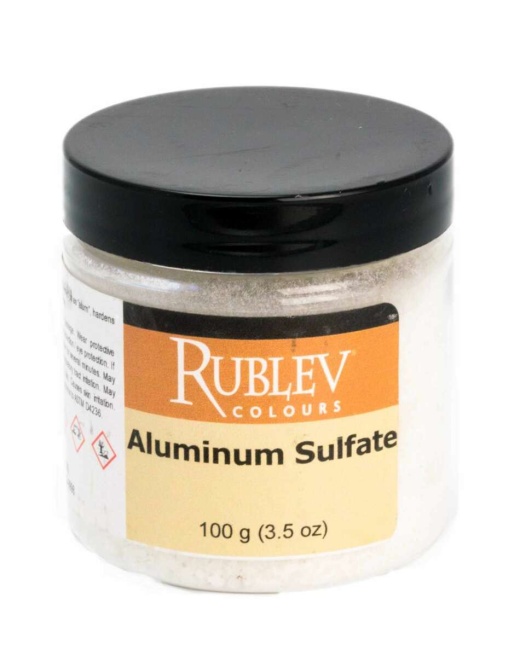Aluminum sulfate is a widely used industrial chemical, sometimes called alum (although alum is more properly aluminum potassium sulfate).
When dissolved in a large amount of neutral or slightly alkaline water, aluminum sulfate produces a gelatinous precipitate of aluminum hydroxide, Al(OH)3. In dyeing and printing cloth, the gelatinous precipitate helps the dye adhere to the clothing fibers by rendering the pigment insoluble. It is also used to fix dyes on mineral substrates to produce lake pigments by precipitating aluminum hydroxide with an alkali.
Artists most often use it to harden glue and starch sizes. Spray a solution of aluminum sulfate and water onto animal skin glue, gesso, or chalk grounds to harden or add them directly to size. For size, use 10 grams for each 100 grams of dry glue. Dissolve the aluminum sulfate in water, heat until completely dissolved, and add the warm solution to the glue solution.
| Typical Properties | |
| Chemical Name: | Aluminum Sulfate Octadecahydrate |
| Chemical Formula: | Al2(SO4)3•18H2O |
| CAS No.: | 7784-31-8 |
| Mesh (%): | 100% 100 mesh |
| Color: | White crystalline powder |
Storage
Store in a cool, dry, ventilated area away from sources of heat, moisture, and incompatibilities. Aluminum sulfate absorbs moisture and becomes a safety hazard when spilled because it absorbs moisture and becomes slippery. Containers of this material may be hazardous when empty since they retain product residues (dust, solids); observe all warnings and precautions listed for the product.
